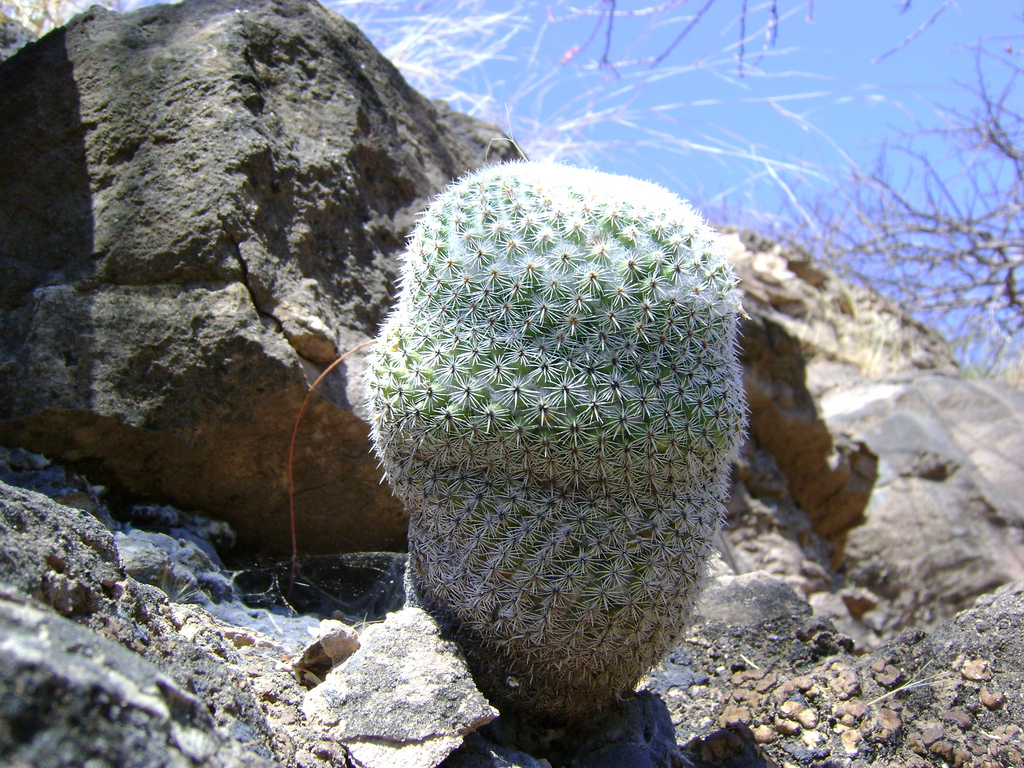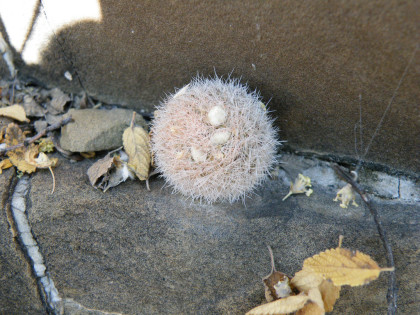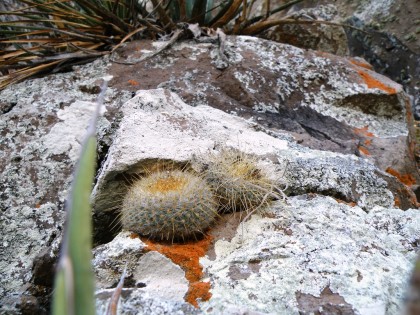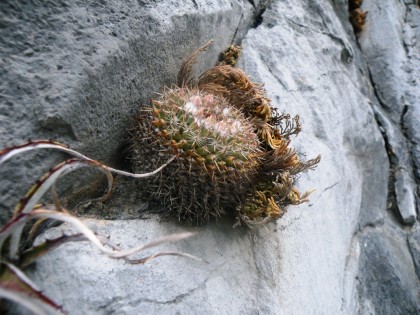(Photograph = Mammilaria growing out of rocks, Amante Darmanin)
Introduction
The science sections of newspapers have recently reported on bacteria that live in the guts of people. These bacteria can have beneficial effects and may even help fight disease. Plants too have internal bacteria that are thought to help the plants, or at least have no detrimental effect. Bacteria inside plants are called endophytes, endo- (“inside”) + -phyte (“plant”).
The Details
Mammillaria fraileana is a rock-colonizing cactus from Mexico. The cacti are pioneer colonists meaning they are some of the first plants to grow on rocky surfaces. Just a few specialized plants can grow in the tiny cracks between the rocks. In the area of the study only M. fraileana and a few other plant species colonize rocky surfaces.
To study bacteria inside the cacti, scientists sterilized the plants and then determined if bacteria were present inside the cacti or seeds. They found four species bacteria inside the plant; the endophytic bacteria are not suspected of causing harm. In fact, the bacteria are suspected to cause great benefit to the cactus.
When cacti colonize rocky areas they face poor soils that have few nutrients. Nitrogen and phosphorus are often in short supply. While these nutrients are present in some rocks, they are locked up tightly as part of the rock. Thus, they are not directly available to colonizing plants.
When the scientists tested the four species of endophytic bacteria, three of the four species could break down rock into ever smaller particles—a necessary step for releasing nutrients. Furthermore, three of the bacteria were actually able to extract phosphorus from the rocks.
Nitrogen is abundant in the air, but it is in a form that the plants cannot use (N2). N2 must be chemically converted into a different form (NH3) by some process. The fourth bacterium was tested for the ability to chemically convert N2 into a form that plants can use. Amazingly, the bacterium was strongly able to produce useful nitrogen from N2.
The bacteria live in the M. fraileana stems and roots. One hypothesis states that the bacteria help M. fraileana colonize rocks. The are thought to do this by helping the plant obtain phosphorous and nitrogen in an environment that is generally hostile to plant life. More work is needed to prove the hypothesis, but it is interesting to think about.





